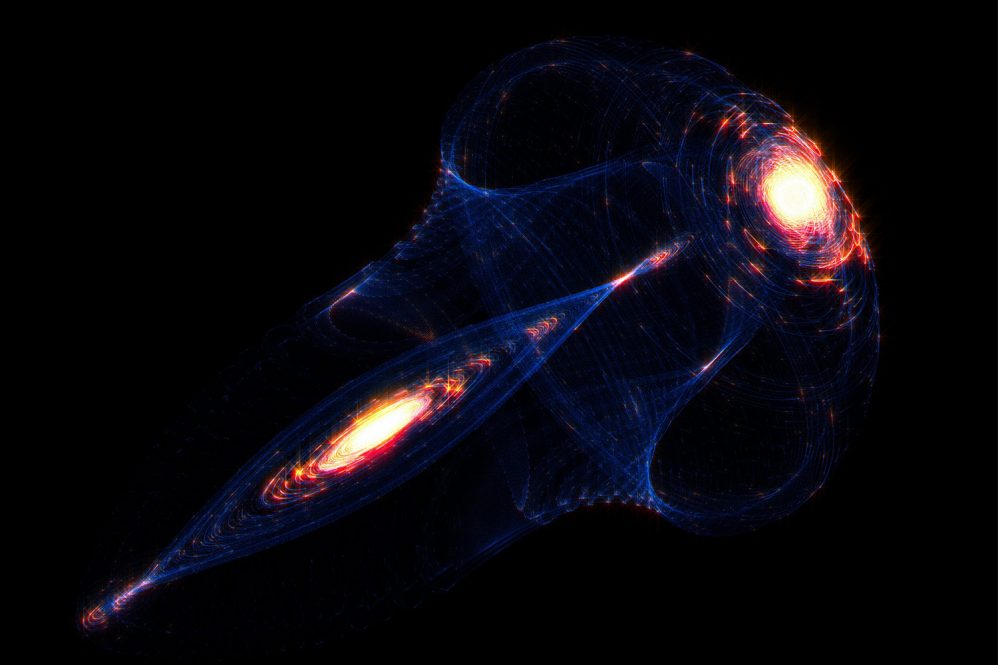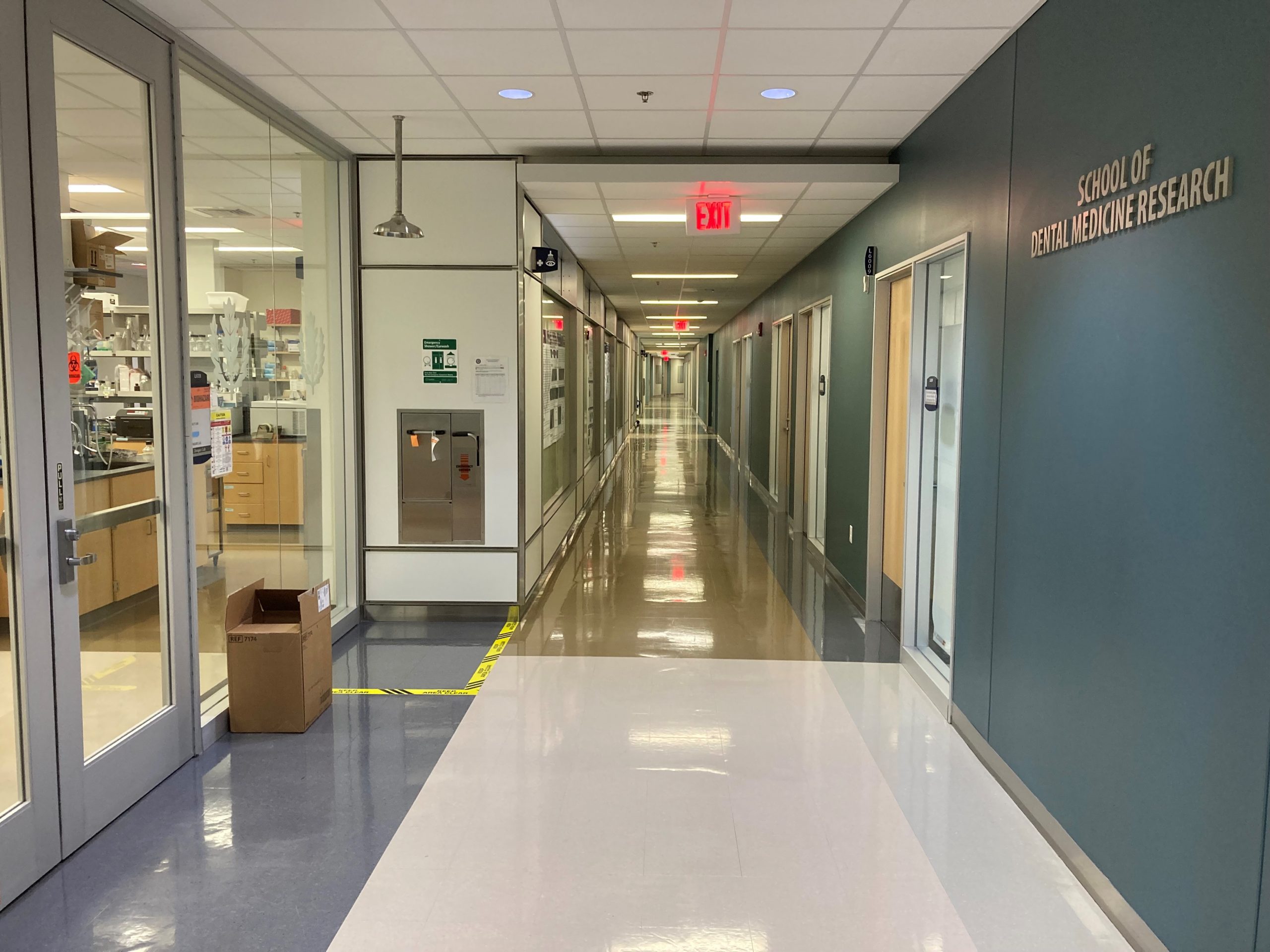Galaxy building takes place over almost unfathomable lengths of time, so studying these processes relies largely on theoretical calculations rather than waiting hundreds of millions of years to watch it all unfold.
However, when a colleague reached out to UConn Department of Physics researchers Assistant Professor Chiara Mingarelli and Ph.D. student Andrew Casey-Clyde, with a concrete observation of a pair of active galactic nuclei (AGN) that also happen to be relatively close by, they jumped at the opportunity to get involved in studying this unique scenario.
The research, published today, focuses on two supermassive black holes which are the closest, best documented, confirmed supermassive black holes in the process of merging or forming a binary.
Reducing the Guesswork
Studying black holes gives clues about how galaxies form, and Casey-Clyde says it is suspected that supermassive black holes lie at the center of most, if not all, massive galaxies. The pair of black holes are relatively close to one another, the product of the collision of two galaxies. They are also relatively close to our galaxy, and both aspects yield a wealth of observational data.
The proximity of the black hole pair is significant because it reduces some guesswork about how these systems evolve. Theoretical galaxy merger rates are based on measurement at much larger separations between black holes, says Casey-Clyde:
“This system was at a predicted separation of about 700 or so light years. Whereas when we’re using theoretical galaxy mergers, those separations are around 100 times larger. With those larger separations, we must make more assumptions about the physics and mechanisms that drive them closer together. This new system makes our predictions more accurate overall.”
Supermassive black holes are surrounded by huge quantities of hot gas and when the black holes get even closer, the systems generate gravitational waves, which astronomers like Mingarelli and Casey-Clyde focus on studying.
“The systems are massive and have huge gravitational fields,” says Casey-Clyde. “The gravitational force speeds things up as it falls closer and closer to the black hole. While the gas speeds up, particles collide and the whole system heats up and starts emitting light in all frequency bands – like radio, microwave, and X-ray, which is why we’re able to see these systems in multiple bands. It’s a supermassive black hole that’s accreting matter.”
It is expected that the supermassive black holes will get closer and closer together until eventually forming a binary that emits low-frequency gravitational waves, says Casey-Clyde, and this observational touchstone means less guesswork is needed to understand the binary formation process.
A Unique Abundance of Data
There are many scientists vying for time on a limited amount of equipment powerful enough to conduct this research. Securing time on equipment like the Hubble Space Telescope starts with writing proposals and going through cumbersome processes to determine if the proposed research warrants observation time on the equipment, therefore having data across multiple frequencies is unique, says Mingarelli.
“This system has radio observations, Hubble data, VLT data, Keck, and they all show evidence for two supermassive black holes. Using all these different telescopes means we can combine the information and get the same answer. It’s powerful.”
The UConn researchers’ analysis of the gravitational wave implications predicts how the system will evolve over the next 100 million years.
“Once we figured out how long it is going to take to start emitting these gravitational waves, we can predict how many other systems like this one might be out there that also emit gravitational waves. As gravitational wave astronomers, it gives us an observational touchstone. In the past, many predictions about these gravitational waves had been based on theoretical galaxy merger rates,” says Casey-Clyde.
Building our Understanding of the Universe
Mingarelli underscores that this project demonstrates a new approach to astronomy, called “multi-messenger astronomy” that combines all the information researchers have at hand:
“By combining the information that we have in terms of light, we can estimate the masses of the black holes. Then using what we understand from gravity and how the system should evolve under the force of gravity, we can predict the amplitude of a gravitational wave background generated by the cosmic merger history of these supermassive black holes. Given the touchstone of this system, we can ask how many other such systems should exist. What kind of observational signature will that create? Should we have already detected it or not? Those are the kinds of questions that we can start to ask and answer using this kind of system.”
Mingarelli says since the black holes are almost equal in size, the gravitational waves they will make in combination as they tug on one another will be as big as they can get.
“These two black holes are going to make power gravitational waves as they merge. Our understanding of how the universe works is that galaxies grow by merging with other galaxies. We therefore expect the supermassive black holes in these galaxies to also merge by emitting gravitational waves. So this is a nice check of our understanding of how the universe works.”



